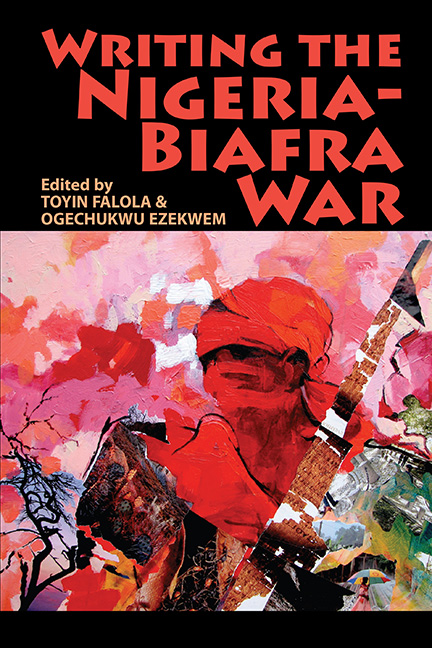Book contents
- Frontmatter
- Contents
- Notes on Contributors
- List of Abbreviations
- Timeline
- Map of Biafra 30 May 1967 – 1 May 1969
- 1 Scholarly Trends, Issues, and Themes: Introduction
- Part I On The History Of The Nigeria-Biafra War
- Part II Critical Debates On The Nigerian Crisis
- Part III The War In Fiction, Memoir, And Imagination
- Part IV Locating Gender In Nigeria-Biafra War Literature
- Select Bibliography
- Index
5 - The Ahiara Declaration: Polemics and Politics
Published online by Cambridge University Press: 17 June 2021
- Frontmatter
- Contents
- Notes on Contributors
- List of Abbreviations
- Timeline
- Map of Biafra 30 May 1967 – 1 May 1969
- 1 Scholarly Trends, Issues, and Themes: Introduction
- Part I On The History Of The Nigeria-Biafra War
- Part II Critical Debates On The Nigerian Crisis
- Part III The War In Fiction, Memoir, And Imagination
- Part IV Locating Gender In Nigeria-Biafra War Literature
- Select Bibliography
- Index
Summary
Biafra had been the former Eastern Region of Nigeria until May 1967 when the Governor, Lieutenant Colonel Chukwuemeka Odumegwu Ojukwu, and leaders of the state declared it a sovereign and independent nation separate and apart from Nigeria. The region's separation from Nigeria was a result of the two deadly military coups in 1966 and the massacres of the easterners, especially the Igbo, in the other parts of Nigeria. The predominant ethnic group in the East was the Igbo and the principal minority groups were the Efik, Ibibio, Ijaw, Okrika, Ogoni, Akwa-Ibom, Annang, Oron, Ogba, Ekpeya, and Ngeni. The young nation fought a brave 30-month civil war with Nigeria and lost on January 1970. It secured diplomatic recognitions as an independent nation from Tanzania, Gabon, Zambia, Ivory Coast, and Haiti.
By June 1969, Biafra was a physical remnant of Igboland still under the control of the Biafran Army. It consisted principally of parts of Owerri; the adjoining towns of Ogbaku, Mbieri, Ikeduru, Isu, Osu, Obowu, Ahiara, Mbaise, Umuaka, Ihiala, and Orlu; and the famous Uli Airport. The territory was less than 5 percent of the original size of Biafra and constituted mainly of the Igbo and some refugees of the minority ethnic groups of the state.
The First Six Years of Post-Independence Nigeria
The Federation of Nigeria, consisting of the three original regions of the East, West, and North became independent on October 1, 1960. It was a day of joy and celebration throughout the country. At midnight on September 30, the British Union Jack, the colonial flag, was lowered throughout Nigeria for the last time. As the Assistant Divisional Officer, Ahoada Division, I was privileged to receive the marchpast by thousands of school children at Elele Catholic School while the Divisional Officer, Anthony St. Ledger, did so at Ahoada town, the division headquarters. The people celebrated and held dances and parties, rejoicing that the domination of the British had ended and that, with independence, life would become better for them. But that was to be a pipe dream, akuko ufere, a story of the wind, a fable.
- Type
- Chapter
- Information
- Writing the Nigeria-Biafra War , pp. 81 - 108Publisher: Boydell & BrewerPrint publication year: 2016

